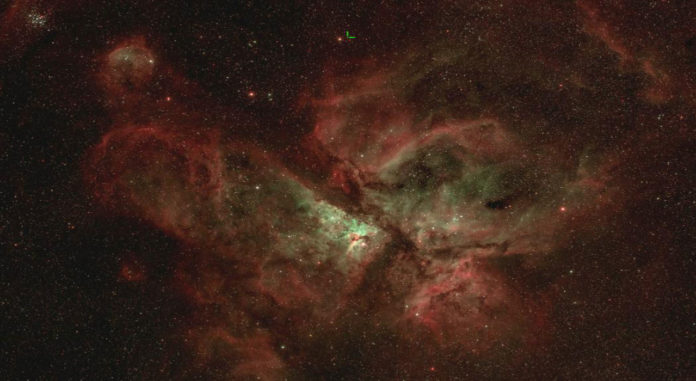A nova is an explosion on the surface of a white dwarf. It is hot and burnt-out core of a star that emits an incredible amount of energy and light, increasing the star’s brightness by thousands or even millions of times.
It’s been thought that nuclear fusion of material on the surface of a white dwarf empowers the light from a nova explosion, which happens about ten times a year in our galaxy.
Using NASA’s space-based telescopes and ground-based telescopes, including some at the UC Mt John Observatory in Tekapo, scientists observed nearby nova in the constellation of Carina. They proved that it is indeed shock waves, rather than nuclear fusion, cause most of the nova’s brightness.
UC Associate Professor in Astronomy and Director of the University of Canterbury Mt John Observatory Karen Pollard, who co-authored the paper said, “I was excited to observe it – a new bright nova in the galaxy is an important opportunity to make a detailed study of the nova’s properties and how these change with time. Using spectroscopy, we were able to examine shock-produced emission and calculate how energetic the shock waves were and how fast the shocking material was moving.”
Elias Aydi, a research associate at Michigan State University’s (MSU) Department of Physics and Astronomy and lead author of the paper, says, “the discovery leads to a new way of understanding the origin of the brightness of novae and other stellar explosions. Our findings present the first direct observational evidence, from unprecedented space observations, that shocks play a major role in powering these events.”
“When material blasts out from the white dwarf, it is ejected in multiple phases and at different speeds. These ejections collide with one another and create shocks, which heat the ejected material producing much of the light.”
The astronomers detected bright gamma-rays from the star, known as nova V906 Carinae (ASASSN-18fv), whose explosion in the constellation Carina was first discovered in March 2018. V906 Car is about 13,000 light-years from Earth. This means that when the nova was early detected in 2018, it had happened 13,000 years ago.
The new information may also help explain how large amounts of light are generated in other stellar events, including supernovae and galactic mergers, when two stars collide with one another. Each nova explosion releases about 10,000 to 100,000 times the annual energy output of the Sun.
Journal Reference:
- Direct evidence for shock-powered optical emission in a nova. DOI: 10.1038/s41550-020-1070-y
